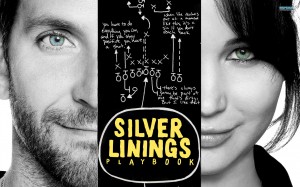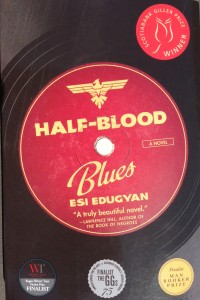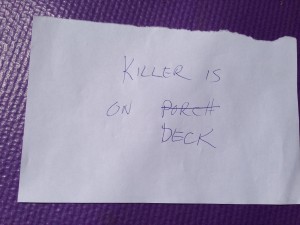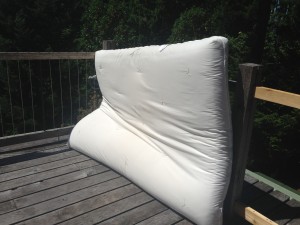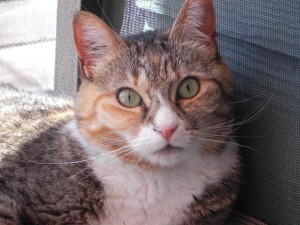SILVER LININGS PLAYBOOK
Last year when I took The Ring Screenwriting workshop, we were asked to view the newly released Silver Linings Playbook and come prepared to dissect and discuss it in class. I loved the movie. It was incredibly well written and directed, with a first class ensemble cast, as subsequent awards proved. But what I took away from it was something more. Something personal. And that is the way the film delves into the impact of mental illness on ordinary families in the ordinary world. I’m not talking about stalkers and serial killers (Basic Instinct, Silence of the Lambs), or eccentric heroic geniuses (Batman, Ironman anyone?). As much as we are fascinated by the extraordinary in society, I think the ordinary is just as engrossing.
MENTAL ILLNESS IS NORMAL
Mental Illness is not only normal, it’s far more widespread than we might like to admit. Think about it. Between Schizophrenia, Bi-Polar Disorder, Depression, Anxiety Disorders that include Eating Disorders, Phobias and Obsessive Compulsive Disorder, Autism, Addictions, Post-Traumatic Stress Disorder – and the many nuances and variations I haven’t mentioned – that’s a pretty big chunk of society, isn’t it? And a large proportion of that is undiagnosed. Just like Pat, the protagonist in Silver Linings Playbook, he “white-knucked it” on his own most of his life, until something happened, some extraordinarily stressful event triggered a breakdown. He snapped, and all hell broke loose.
I love these two scenes for illustrating just that point. Here is Pat’s BF Ronnie talking about how the stresses of life feel to him, and how he deals with it.It makes you wonder who’s the crazy one.(WARNING: These clips contain a bit of vulgar language.)
In a SAG interview with screenwriter/director David O. Russell he talks about his son, and how this story appealed to him as a way of integrating and normalizing mental illness for his son. He doesn’t give any details of his son’s condition, but I can only assume that Russell is pretty sensitive to what it’s like to try to live a normal life, and to help a loved one lead a normal life, under these challenging circumstances. He specifically refers to how the main characters’ illness affects all the people around them.
AT WHAT COST?
How many families are impacted by mental health issues? Is yours? Mine is. Do you ever wonder what it’s like to experience dealing with alcoholism, depression, OCD and Bi-Polar disorder, on top of the normal challenges and stresses of life? Or do you already know. I’ve seen what any of those things can do to the family members who’s lives are affected. The spouses, the children, the parents. It sucks a lot of energy. It can bring you down. It can derail a career or a marriage. It puts enourmous strain on relationships. It can spoil the holidays and make everyone afraid to speak, for fear of saying the wrong thing, of setting someone off, of doing harm. And so we hold it in. And it’s easy for the damage to spread. For family members to become enablers.
And when I saw the movie, this is what I thought about. Not only about the impact mental illness has on the lives of the people who suffer from one condition or another, but of the ripples of disruption that spread outward from the patient to their families, friends, coworkers and community. Pretty soon you see it’s an intricately woven blanket that spreads over us all. And often it’s not diagnosed at all, is poorly understood and not supported.
One of my favourite scenes from the movie, not the diner scene with Jennifer Lawrence that you most often see, or any of the scenes which depict the two protagonists, the two “mental health” patients interacting with each other, but instead the interaction between the two brothers, Pat and Jake.
This was one of my favourite scenes in the film, because it shows so beautifully how the family of Pat is affected by his illness. Watch to see how they are all on tenterhooks during the exchange. It’s beautifully portrayed. It’s a testament to Pat’s recovery that Jake’s anxiety and general weirdness doesn’t push any of his buttons, and he rises above it.
I Got Nothin But Love For You Brother
Leave a comment and tell me, if you’ve seen the movie, which was your favourite scene and why? Can you relate to any of the characters in Silver Linings Playbook?

